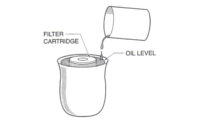The weather was getting to feel like fall and people were beginning to start their furnaces in the morning when Bob got a call from the dispatcher saying that a customer was smelling smoke and oil fumes from her oil furnace in the basement. Bob called the customer and told her to shut the furnace off until he could get there and check it out.
Bob arrived and talked to the customer who led him to the basement where the upflow oil furnace was located. He could still smell the oil fumes. He shut off the switch at the furnace and went to the room thermostat and set the thermostat to call for heat. Then he could operate the furnace from the basement switch when he wanted it to run.
Bob turned on the switch and the furnace started up normally. Within a few seconds, oil smoke began to seep from around the burner flange and the inspection door to the burner. He shut it off before it became too hot.
Bob thought to himself that this is a classic case of needing a burner tune-up. He went to his truck and brought in his oil burner tools. He removed the burner and set it on the floor so he could change the nozzle. It had a 0.75 nozzle in the burner. Just as a precaution he checked the nameplate and the nozzle was correct. The nozzle looked old and stained so Bob knew he was on the right track. After changing the nozzle, he changed the oil filter, careful to place it in a small pan that he carried just for containing oil spills. He then filled the filter cartridge housing with fresh oil from a gallon of oil that he carried for this purpose. He knew that filling the cartridge with fresh oil would keep air from entering the system.
This was a two-pipe system so Bob fastened a gauge on the inlet to the pump and the outlet to the pump to verify the correct oil pressure. He was now ready for start up.
Bob turned the furnace on while looking at the gauges. They read 100 psig on the outlet and 3 inches of vacuum on the inlet. He was thinking what a great job he had done when all of a sudden smoke began to form again in the same places. Now, his confidence went out the window. He knew that all oil furnaces need to have a routine nozzle and filter change. He had made sure the burner was tight against the flange, yet he still had smoke in the area. Btu Buddy appeared and asked, "What is the trouble, Bob?"
Bob went over all that he had done.
Btu Buddy said, "You did the right thing in changing the nozzle and filter. That needed to be done. But you are not finished with this call. There are some other routine things that you owe the customer. Start with checking the draft over the fire. Then we will move on to a smoke test and a CO2 test for efficiency. I see that you have all of the instruments to do this."

Btu Buddy asked, "What do you think the problem may be, and what are you going to do first?"
Bob said, "I am going to loosen the flue connector to the chimney and look in there and see what I can see."
Bob loosened the connector and saw that it was clean; this had not been going on for long. He then shined a light into the furnace and it was not very dirty - no soot accumulation - verifying that the problem was new. He then shined the light into the chimney and saw some straw at the bottom. He took a mirror and looked up the chimney. He could see light, but not much.
Bob put a ladder on the side of the house and went up on the roof. He shined his light down the chimney and saw the problem. There was a bird nest partway down that was partially blocking the chimney.

Bob then went to the furnace and started it up again. The furnace started and did not smoke. The draft gauge showed 0.02 inches of draft, which is a good draft for over the fire.
Btu Buddy then said, "It is time to perform the rest of the testing, a smoke test and a CO2 test."
Bob did a smoke test and it showed no smoke. The CO2 test showed 13 percent CO2 which is very good. The flue temperature was 510 degrees and the temperature of the basement was 65 degrees, a net flue temperature of 445 degrees, and the efficiency was over 75 percent. Figure 2 shows tools for taking these readings. All was well.


Bob said, "You are right. I assumed that a tune-up would solve all of the problems."
Btu Buddy then said, "It is always best to run an efficiency test and smoke test. They take a little more time, but now you know the system is in good shape and you verified it in a written report to the customer. That builds customer confidence in you and your company."
Bob said, "Again, thanks for helping me become a professional."
Publication date: 10/23/2006









